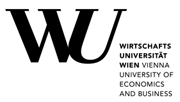Department of Economics Working Papers,
Vienna University of Economics and Business, Department of Economics
No 222: Unconventional US Monetary Policy: New Tools, Same Channels?
Martin Feldkircher () and Florian Huber ()
Additional contact information
Martin Feldkircher: Oesterreichische Nationalbank (OeNB)
Florian Huber: Department of Economics, Vienna University of Economics and Business
Abstract: In this paper we compare the transmission of a conventional monetary policy shock with that of an unexpected decrease in the term spread, which mirrors quantitative easing. Employing a time-varying vector autoregression with stochastic volatility, our results are two-fold: First, the spread shock works mainly through a boost to consumer wealth growth, while a conventional monetary policy shock affects real output growth via a broad credit / bank lending channel. Second, both shocks exhibit a distinct pattern over our sample period. More specifically, we find small output effects of a conventional monetary policy shock during the period of the global financial crisis and stronger effects in its aftermath. This might imply that when the central bank has left the policy rate unaltered for an extended period of time, a policy surprise might boost output particularly strongly. By contrast, the spread shock has affected output growth most strongly during the period of the global financial crisis and less so thereafter. This might point to diminishing effects of large scale asset purchase programs.
Keywords: Unconventional monetary policy, transmission channel, Bayesian TVP-SV-VAR
JEL-codes: C32; E52; E32 March 2016
Note: PDF Document
Full text files
wp222.pdf
Report problems with accessing this service to Sune Karlsson ().
RePEc:wiw:wiwwuw:wuwp222This page generated on 2025-09-20 04:36:36.

